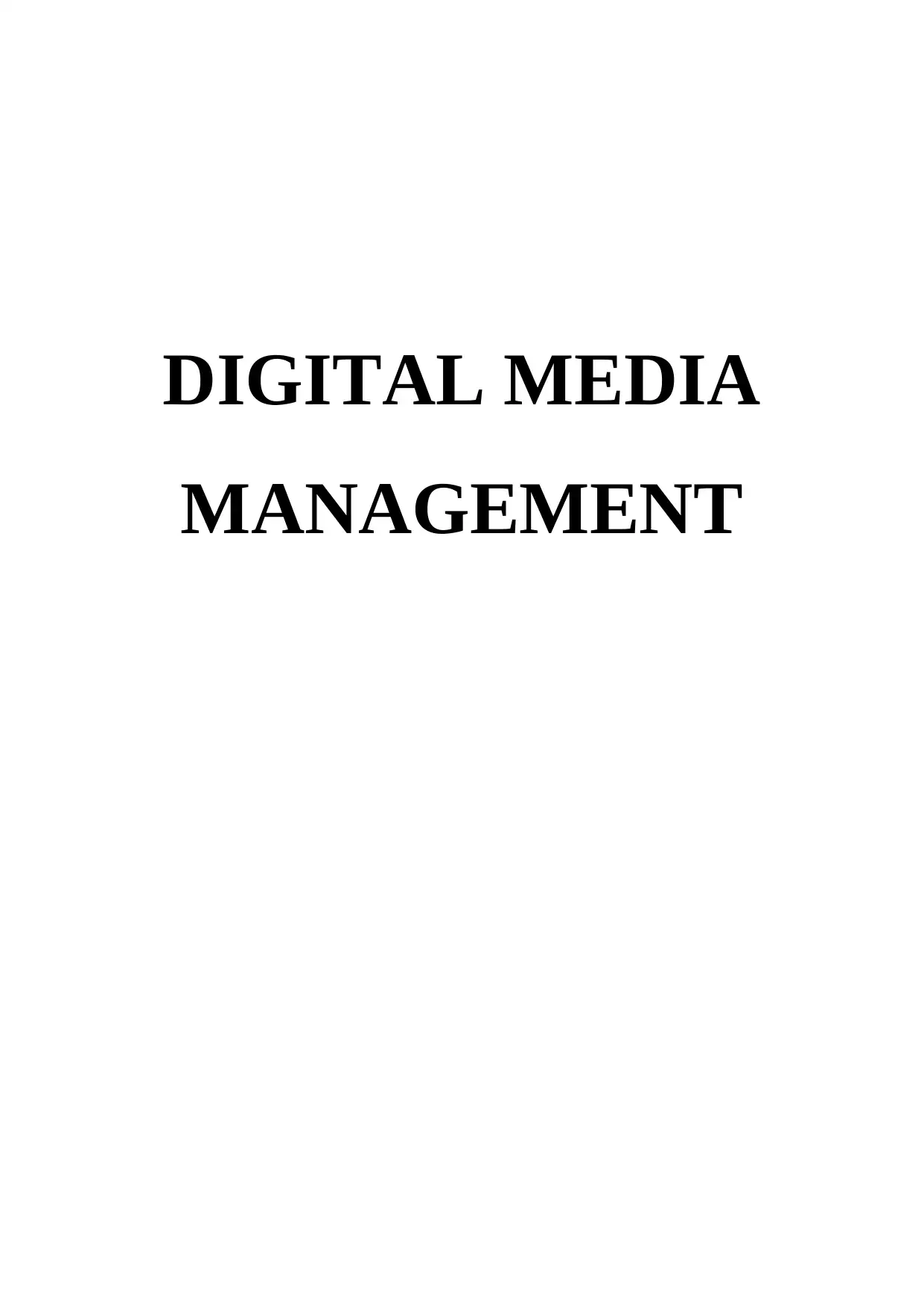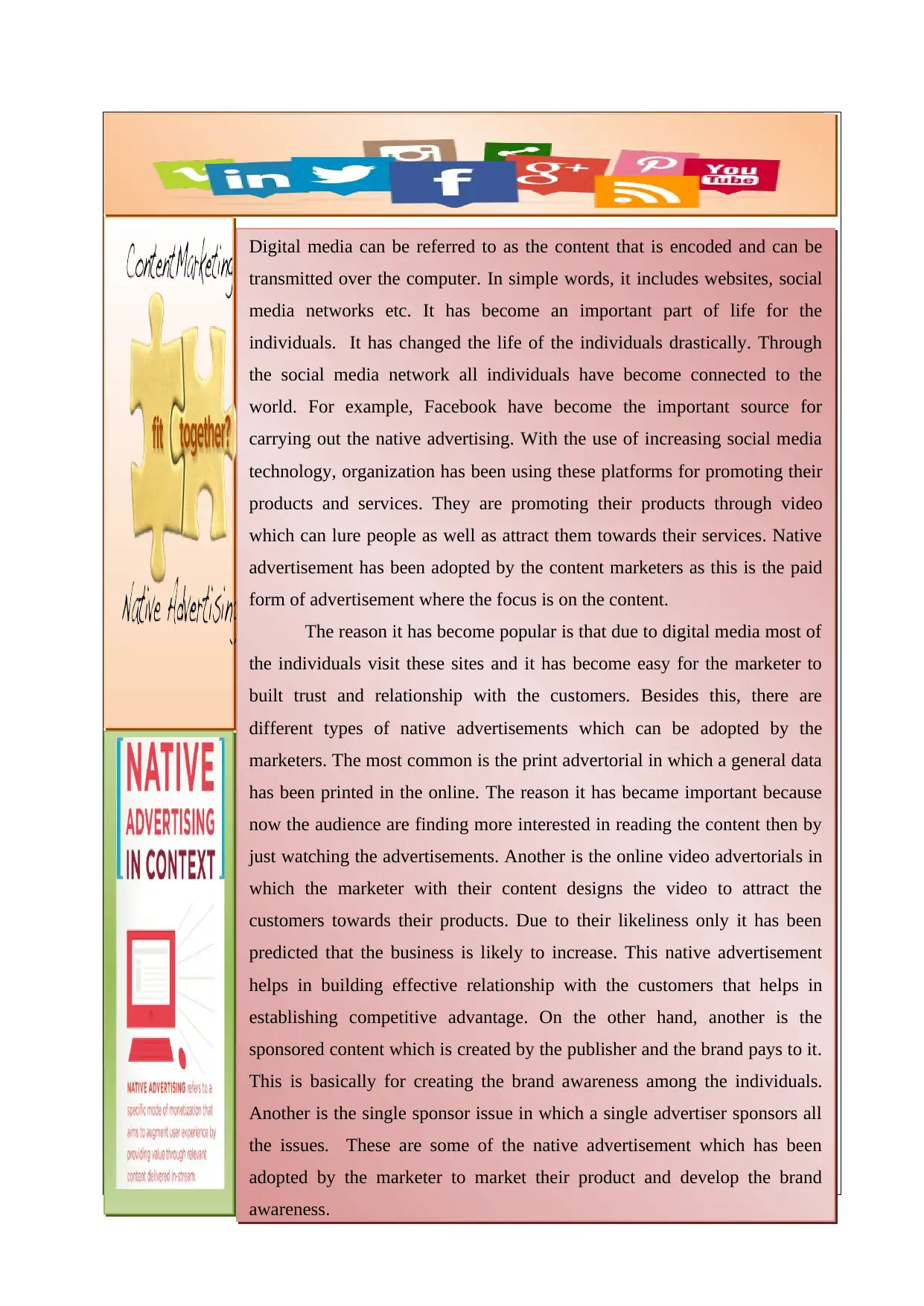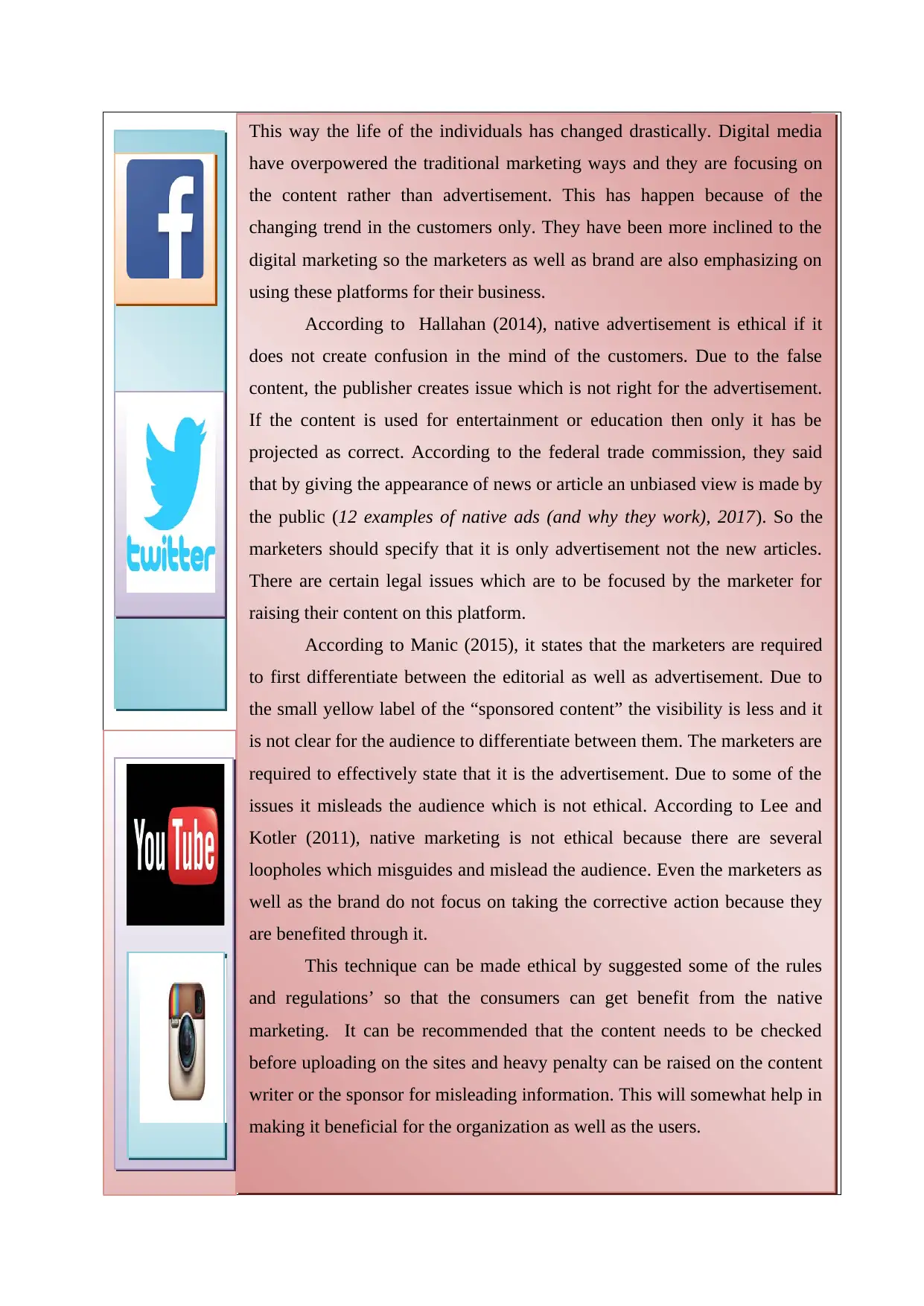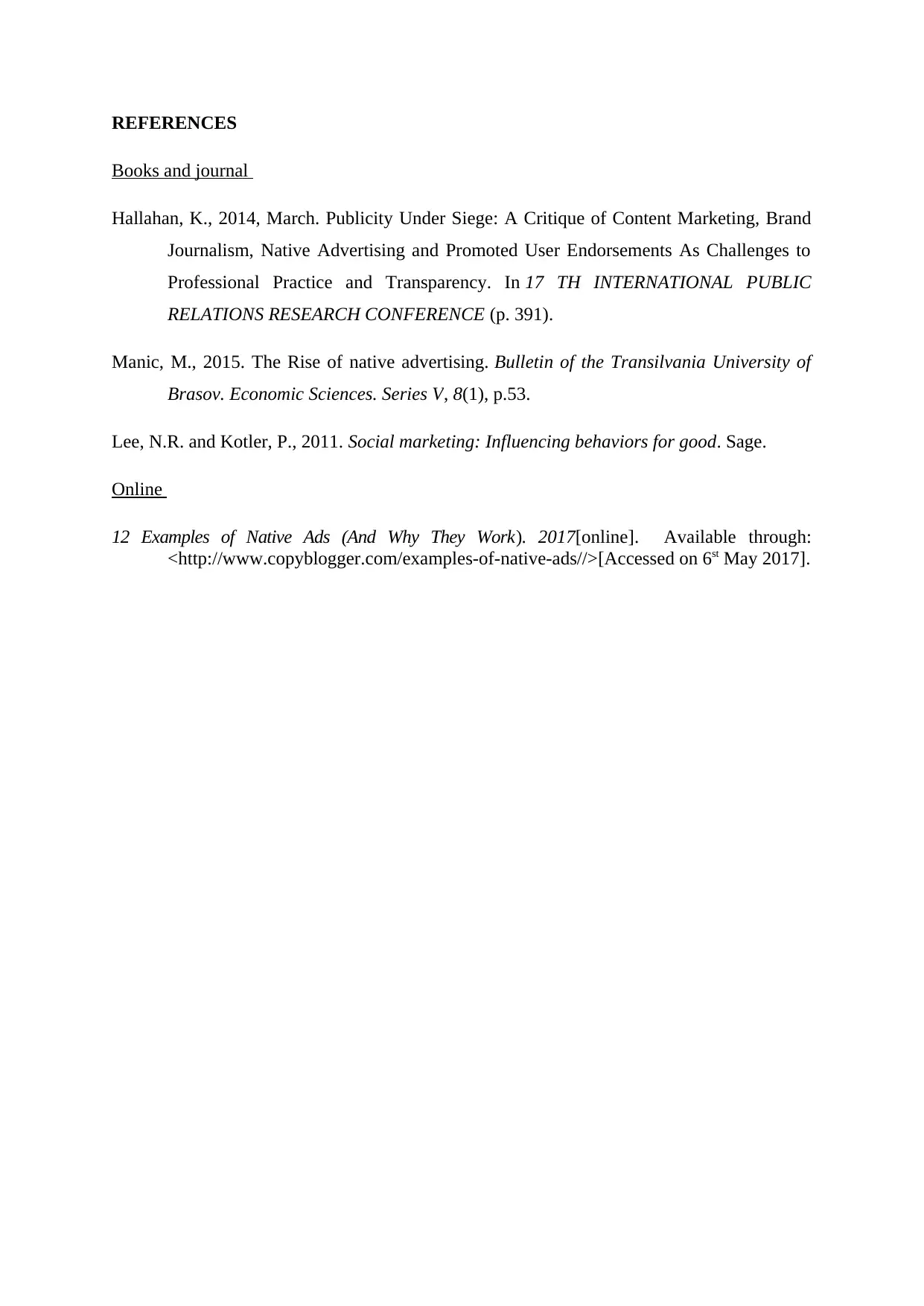Digital Media Management: Native Advertising, Legal Issues and Trends
VerifiedAdded on 2020/01/28
|4
|943
|222
Essay
AI Summary
This essay provides a comprehensive analysis of native advertising within the context of digital media management. It begins by defining digital media and highlighting its significance in modern life, particularly through the use of social media platforms for marketing purposes. The essay delves into the concept of native advertising, explaining its various forms, such as print advertorials, online video advertorials, sponsored content, and single sponsor issues, and how these strategies are employed by marketers. It then explores the ethical and legal considerations surrounding native advertising, referencing scholarly sources to discuss issues of transparency and potential for consumer confusion. The essay concludes by suggesting potential regulations and guidelines to ensure ethical practices in native advertising, emphasizing the need for content verification and penalties for misleading information to protect both organizations and users. The essay also provides references to support the arguments.
1 out of 4










![[object Object]](/_next/static/media/star-bottom.7253800d.svg)